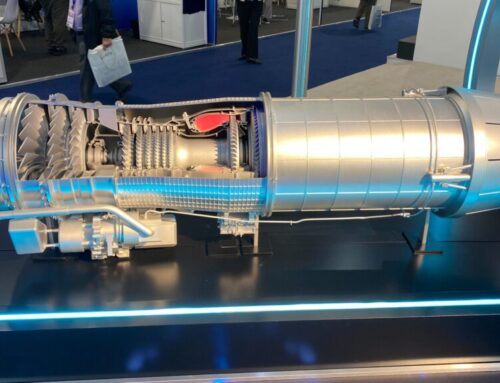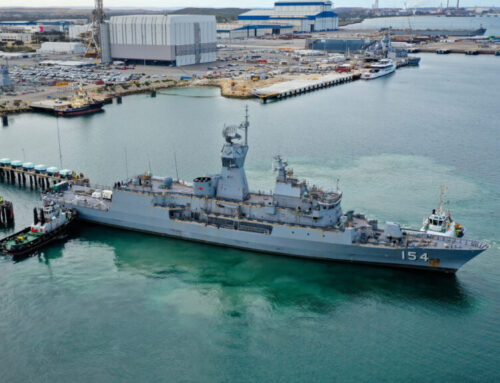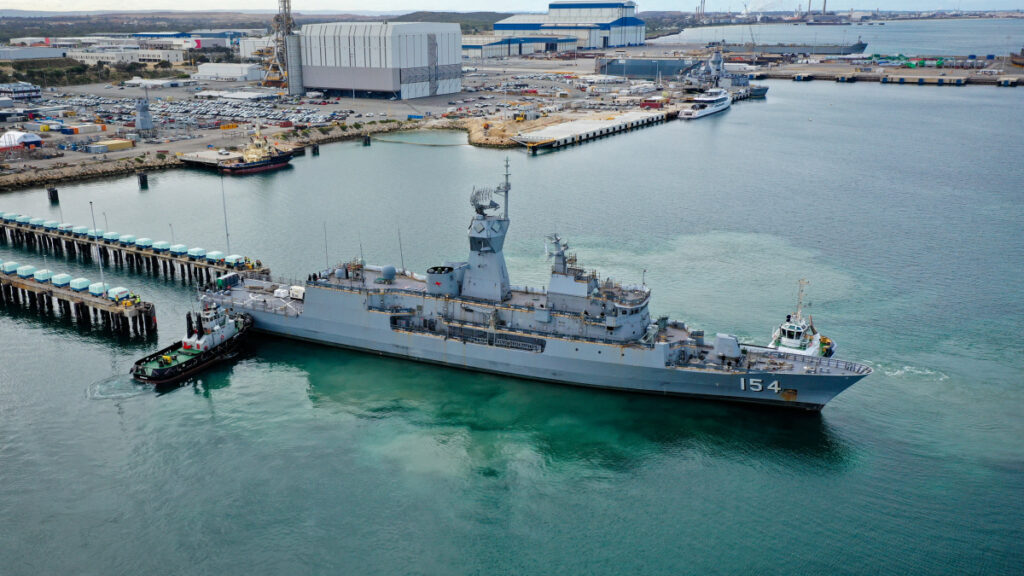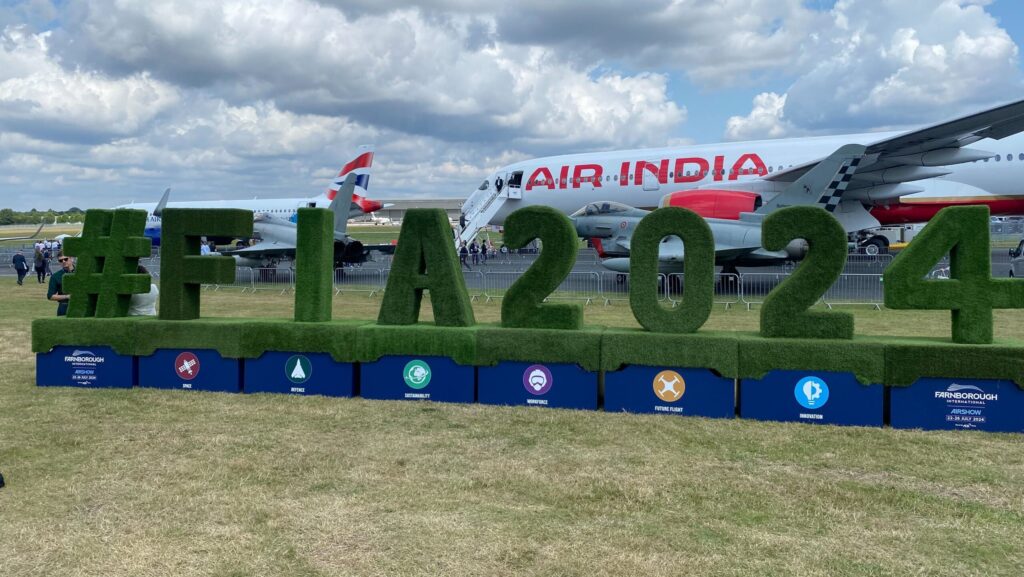The USV Mariner, a US Navy research and development vessel, is shown docked at the United States Naval Academy where it will be christened on Aug. 23, 2022. (Justin Katz/Breaking Defense)
WASHINGTON — The US Navy announced that four industry teams have completed an engine reliability test as part of the Large Unmanned Surface Vessel program, a wonky-but-crucial mile marker that has had lawmakers’ attention since the program’s inception in 2020.
The four shipbuilders, each of which worked with different facilities to accomplish their respective tests, were Bollinger, Fincantieri Marinette Marine, Gibbs & Cox, and HII.
“Demonstrations of each engine configuration took place over 720 continuous hours,” according to a March 22 Navy statement. “No human intervention or preventative/corrective maintenance on the equipment was permitted during this time. Successfully completing the demonstration meant that an engine system could not exhibit any failures or issues that would require maintenance of any kind during operations on an unmanned ship for 30 days.”
Successfully passing the reliability testing is a requirement for an engine to qualify for use in the final LUSV program, the statement added.
LUSV is envisioned to be longer than 200 feet in length with a full load displacement of approximately 1,500 tons. The program of record was formally introduced in the 2020 budget request with ambitious timelines for fielding a fully-fledged unmanned ship capable of adding to the fleet’s magazine capacity as well as wielding a variety of payloads.
Those early plans have largely been put aside, however, in recent years as funding cuts and congressional hesitancy has created uncertainty about when the first operational LUSV will reach the fleet. Plans for the program in the fiscal year 2024 request projected it receiving on average more than $100 million in research and development funding annually for the foreseeable future. Those projections, at least for FY25 and FY26, have been cut in half as the Navy, as well as the rest of Pentagon, copes with the budget caps set by the Fiscal Responsibility Act of 2023.
The latest budget justification documents indicate the service plans to select a prime contractor for LUSV in FY27.
Friday’s testing announcement is significant for two reasons. Firstly, engine reliability has been a key issue for lawmakers since the Navy introduced the LUSV program in 2020. The crux of the issue is simple: Lawmakers don’t want to spend hundreds of millions of dollars on an unmanned and autonomous ship that is lost at sea simply because the engine failed and there was no sailor aboard to fix it.
With that in mind, congressional provisions in the 2021 National Defense Authorization Act laid out specific requirements for the propulsion systems used aboard the Navy’s programs of record unmanned ships. Since then, the service has had several unmanned surface ships — Sea Hunter, Sea Hawk, Ranger and Nomad — acquired as part of varying research and development programs make extended journeys and reach the 30 day-threshold in the process. But the formal testing announcement, which explicitly cites the 2021 legislation, appears to be aimed at quashing lawmakers’ concerns.
“These successful test events mark a significant milestone for our team and brings us one step closer to delivering the Large Unmanned Surface Vessel to the Navy,” said Capt. Scot Searles, the LUSV program manager. “The completion of these rigorous engine tests is a testament to the hard work and collective expertise of both our Navy team and our industry partners. We are pleased with the results and look forward to continuing our work with industry to forge the future hybrid fleet.”
The second reason the announcement is significant is that it at least slightly pulls back the curtain on the behind-the-scenes race among industry to claim the coveted detailed design and construction contract that the Navy says it hopes to award in FY27.
All four companies, as well as Austal USA and Lockheed Martin, were selected in FY20 to begin nascent research and development efforts for LUSV. As such, they’re all viewed as likely contenders to eventually be the high-profile program’s prime contractor. Spokespeople for Austal USA and Lockheed Martin, the two companies not included in the Navy’s statement, did not immediately respond to a request for comment from Breaking Defense.
Public remarks from the Pentagon about a program with a pending competition are rare due to the potential that such comments will spur a legal challenge or Government Accountability Office dispute down the line. Last Friday’s statement gives a small glimpse into the progress some of the LUSV program’s potential bidders have made so far.






![The sights from the 2024 Farnborough Airshow [PHOTOS]](https://centurionpartnersgroup.com/wp-content/uploads/2024/07/IMG_8722-scaled-e1721930652747-1024x577-hZjwVb-500x383.jpeg)




